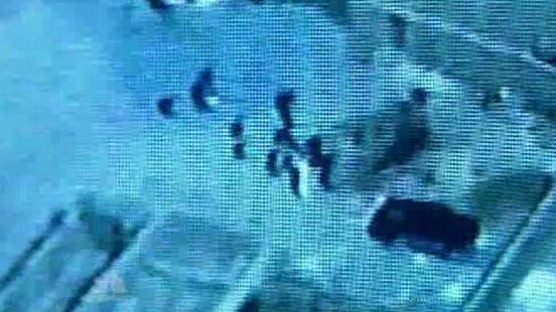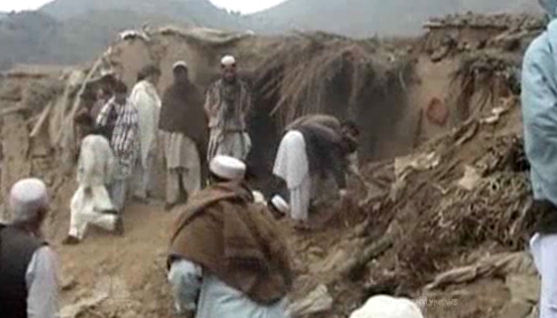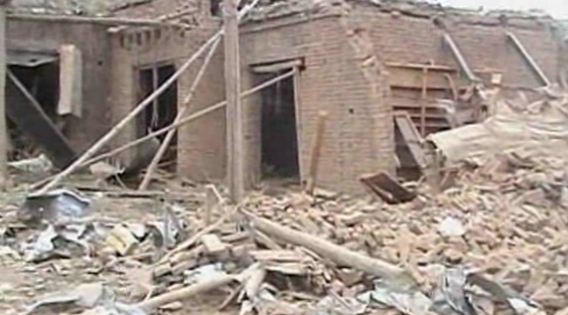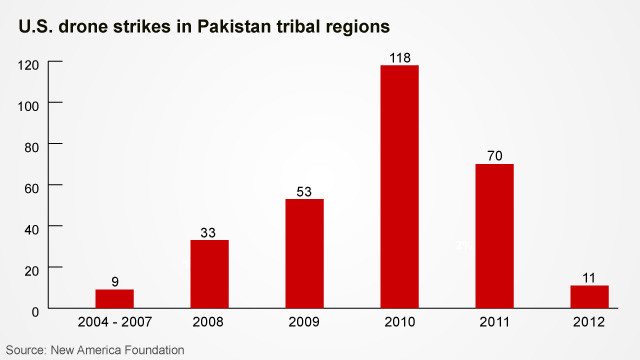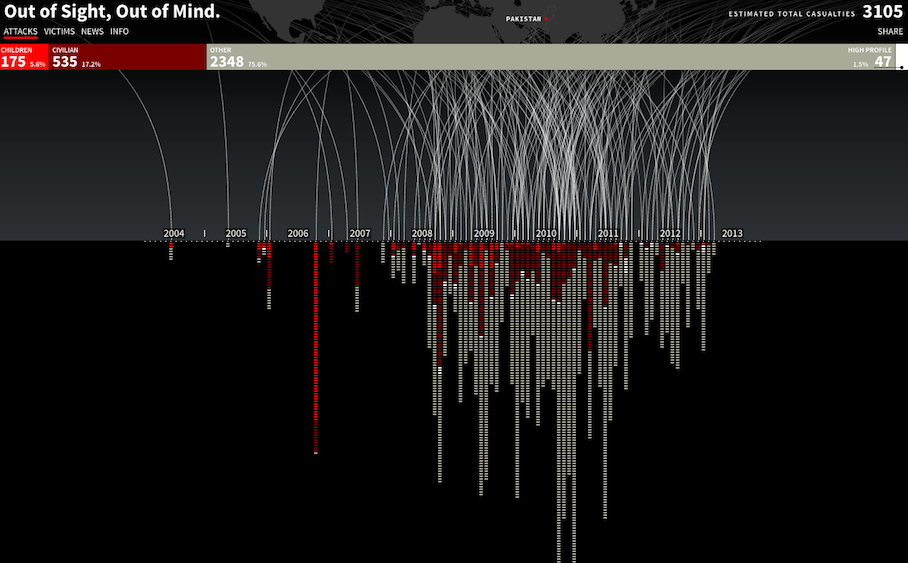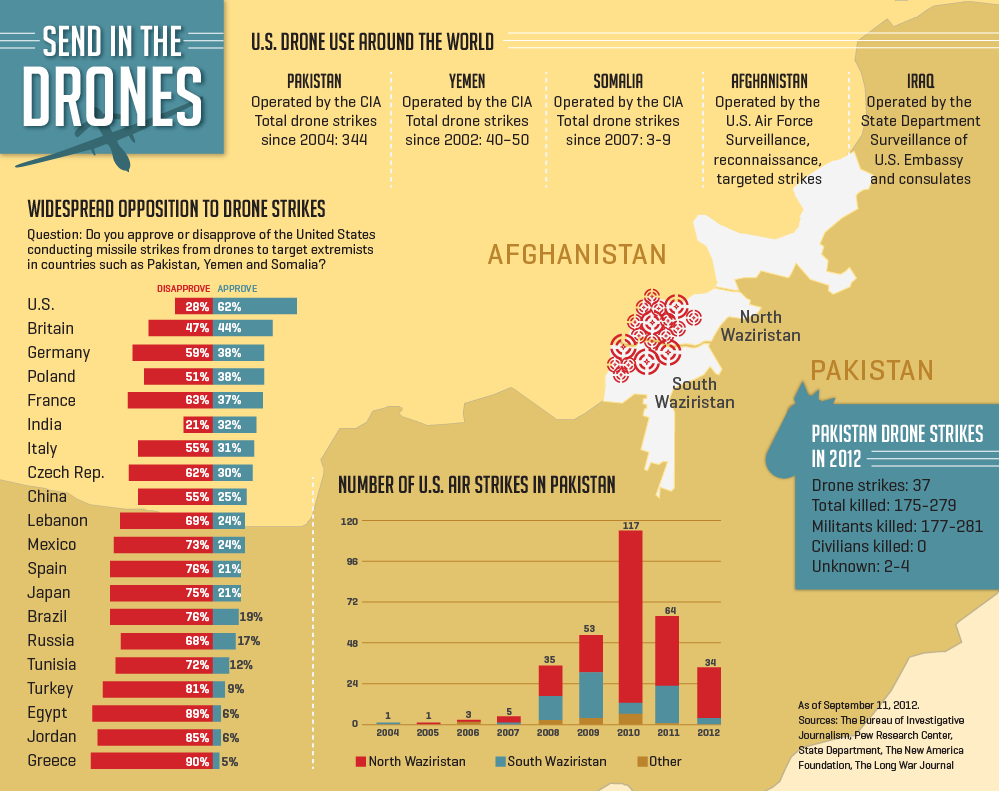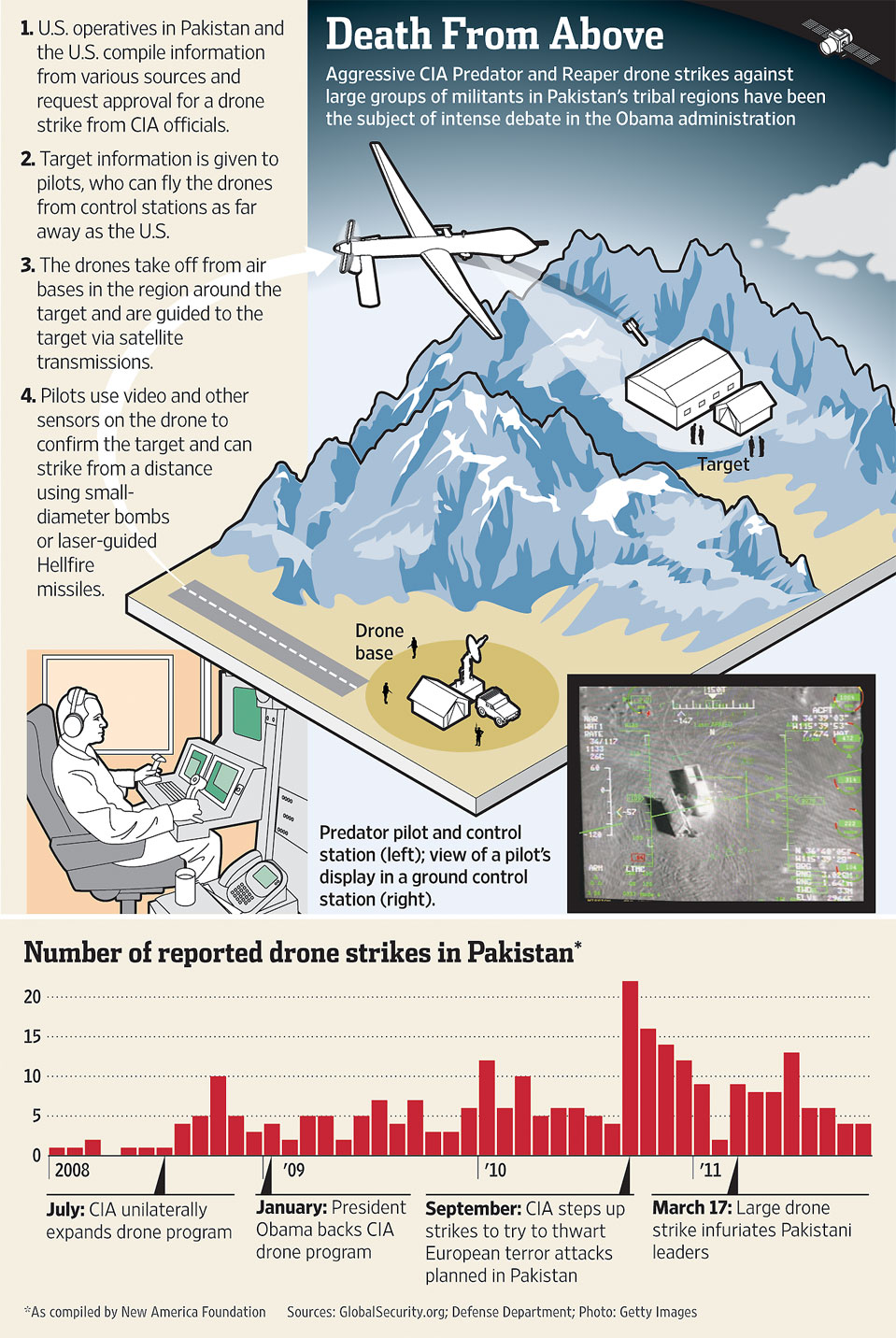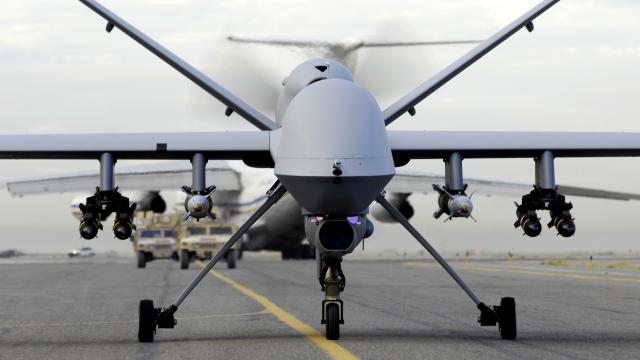
The CIA did not always know who it was targeting and killing in drone strikes in Pakistan over a 14-month period, an NBC News review of classified intelligence reports shows.
About one of every four of those killed by drones in Pakistan between Sept. 3, 2010, and Oct. 30, 2011, were classified as "other militants,” the documents detail. The “other militants” label was used when the CIA could not determine the affiliation of those killed, prompting questions about how the agency could conclude they were a threat to U.S. national security.
The uncertainty appears to arise from the use of so-called “signature” strikes to eliminate suspected terrorists -- picking targets based in part on their behavior and associates. A former White House official said the U.S. sometimes executes people based on “circumstantial evidence.”
Three former senior Obama administration officials also told NBC News that some White House officials were worried that the CIA had painted too rosy a picture of its success and likely ignored or missed mistakes when tallying death totals.
NBC News has reviewed two sets of classified documents that describe 114 drone strikes over 14 months in Pakistan and Afghanistan, starting in September 2010. The documents list locations, death and injury tolls, alleged terrorist affiliations, and whether the killed and injured were deemed combatants or non-combatants.
Though the Obama administration has previously said it targets al Qaeda leaders and senior Taliban officials plotting attacks against the U.S. and U.S. troops, officials are sometimes unsure of the targets’ affiliations. About half of the targets in the documents are described as al Qaeda. But in 26 of the attacks, accounting for about a quarter of the fatalities, those killed are described only as “other militants.” In four others, the dead are described as “foreign fighters.”
In some cases, U.S. officials also seem unsure how many people died. One entry says that a drone attack killed seven to 10 people, while another says that an attack killed 20 to 22.
Yet officials seem certain that however many people died, and whoever they were, none of them were non-combatants. In fact, of the approximately 600 people listed as killed in the documents, only one is described as a civilian. The individual was identified to NBC News as the wife or girlfriend of an al Qaeda leader.
Micah Zenko, of the Council on Foreign Relations, says that more civilians and non-combatants have likely been killed by U.S. drone strikes than the Obama administration has claimed.
Micah Zenko, a former State Department policy advisor who is now a drone expert at the Council on Foreign Relations, said it was “incredible” to state that only one non-combatant was killed. “It’s just not believable,” he said. “Anyone who knows anything about how airpower is used and deployed, civilians die, and individuals who are engaged in the operations know this.”
The CIA declined to comment, and the White House did not immediately respond to calls and emails requesting comment. Important reporting on the subject also was done previously by McClatchy Newspapers.
A senior White House official who spoke on condition of anonymity, said, “In the past, and currently, force protection is a big part of the rationale for taking action in the Afghan theater of operations.”
Separately, on background, the official noted that as President Barack Obama said in an address last month, as the U.S. involvement in Afghanistan declines, so will the number of strikes.
The CIA uses two basic methods to target people for killing, according to current and former U.S. officials.
The first is called a “personality” strike. These strikes target known terrorists, whose identities have been firmly established through intelligence, including visual surveillance and electronic and human intelligence. In other words, the CIA knows who it is killing.
In so-called “signature” strikes, intelligence officers and drone operators kill suspects based on their patterns of behavior -- but without positive identification. With signature strikes, the CIA doesn’t necessarily know who it is killing. One former senior intelligence official said that at the height of the drone program in Pakistan in 2009 and 2010, as many as half of the strikes were classified as signature strikes.
Analysts use a variety of intelligence methods and technologies that they say give them reasonable certainty that the “signature” target is a terrorist. Part of the analysis involves crunching data to make connections between the unidentified suspects and other known terrorists and militants. The agency can watch, for example, as an unknown person frequents places, meets individuals, makes phone calls, and sends emails, and then match those against other people linked to the same calls, emails and meetings.
A half dozen former and current U.S. counter-terrorism officials told NBC News that signature strikes do generally kill combatants, but acknowledge that intelligence officials doesn’t always know who those combatants are. Some of the officials said the moral and legal aspects of the signature strikes were often discussed, but without any significant change in policy.
Retired Adm. Dennis Blair, former director of national intelligence, says that drone strikes can more effectively identify and target combatants than other types of airstrikes.
Ret. Adm. Dennis Blair, who was Director of National Intelligence from Jan. 2009 to May 2010, declined to discuss the specifics of signature strikes, but said “to use lethal force there has to be a high degree of knowledge of an individual tied to activities, tied to connections.”
He also defended the precision of drone strikes in general. “In Afghanistan and Iraq and places where you have troops in combat,” said Blair, “you know better with drones who you’re killing than you do when you’re calling in artillery fire from a spotter [or] calling in an airplane strike.”
Said Blair, “This is no different from decisions that are made on the battlefield all the time by soldiers and Marines who are being shot at, not knowing who fired the shot, having to make judgments on shooting back or not. This is the nature of warfare.”
Once a target has been killed, according to current and former U.S. officials, the CIA does not take someone out of the combatant category and put them in the non-combatant category unless, after the strike, a preponderance of evidence is produced showing the person killed was a civilian.
A 2012 AP investigation reported that in 10 drone attacks from the preceding 18 months, Pakistani villagers said that about 70 percent of those killed were militants, while the rest of the dead were either civilians or tribal police. The AP report notes that Pakistani officials and villagers claimed that 38 non-combatants were killed in a single strike on March 17, 2011.
According to the AP, U.S. officials said the group hit by the strike was heavily armed and behaved in “a manner consistent with al Qaeda-linked militants.” Villagers and Pakistani officials said the gathering was a “jirga,” or community meeting, in which locals were negotiating with a small group of militants over mining rights.
U.S. officials listed 20 to 22 dead in the strike, according to the documents obtained by NBC News, and described them as “other militants.” A former U.S. official told NBC News the drone attack was a “signature” strike, while a U.S. human rights advocate who has interviewed local villagers – and is skeptical of Pakistani claims of widespread civilian casualties from drone strikes -- supported the Pakistani description of the meeting as a jirga and most of the victims as non-combatants.
In a speech at the National Defense University in May, President Obama defended his administration’s use of targeted killings. He acknowledged that there had been civilian casualties, and that drone technology raised “profound questions” about “who is targeted and why,” but he also said the CIA’s drone program was “legal,” “lethal,” “effective,” and the most humane option for counterterrorism. He said the U.S. had a “high threshold ... for taking lethal action,” and that the drawdown of forces in Afghanistan and successful action against al Qaeda would likely “reduce the need for unmanned strikes” in 2014.
On the same day, the White House released a fact sheet stating its standards for using force outside of the U.S. and war zones. It stated that there had to be a legal basis for using lethal force, and that “the United States will use lethal force only against a target that poses a continuing, imminent threat to U.S. persons.”
3 WAYS TO SHOW YOUR SUPPORT
- Log in to post comments

